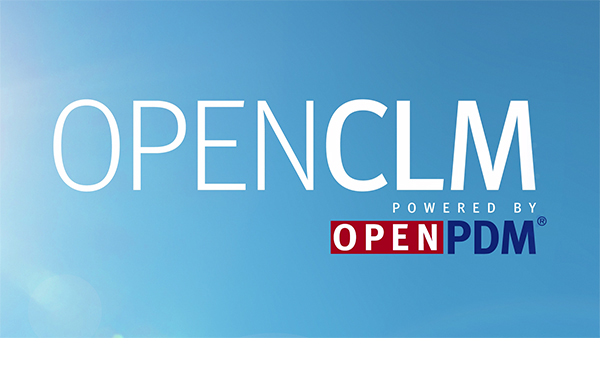
|
|
The interdisciplinary development of smart, connected products and production systems is producing a growing flood of data that is constantly changing. In order to assess the progress of projects, it is necessary to compare information from different data sources at regular intervals. OpenCLM supports configuration lifecycle management through cross-system and cross-discipline baselining that allows companies to react to changes faster. Industry 4.0 and the Internet of Things (IoT) are placing demanding requirements on the adaptability of IT structures. The frequency of changes is increasing exponentially – not just in the products but also in the technologies, methods and tools. To make it possible to get to grips with the growing complexity of product development, many enterprises are for example implementing agile development methods and new IT tools for model-based systems engineering (MBSE). Monolithic system architectures with static interfaces are inadequate in the face of this dynamic change and the necessary level of integration between development and production. The use of IoT platforms is also only seemingly a solution. The challenge lies not in collecting data but in interconnecting it in a sufficiently intelligent way that the product configurations are traceable for all disciplines in every phase of the product lifecycle. Companies want a baseline for each milestone and, if possible, even want to predefine the deliverables to be produced by the individual disciplines for each baseline. The concept of baselining originally comes from the software development field and makes it possible to "freeze" a given development level that can be rolled back to if necessary. In the context of cyber electronic product development, the task is to bring together the information present in different source systems and data sources or to link this information in line with process-specific requirements. This makes it possible to identify which development objects belong to a production order on approval for manufacturing or when the order is released. To a certain extent, baselining is the prerequisite for the digital master or digital twin that reflects a delivered product configuration. 
Based on the OpenPDM integration platform, PROSTEP has brought this concept to life in the form of an easy-to-implement solution for cross-discipline configuration lifecycle management. Using existing connectors and the OSLC standard for data linking, OpenCLM makes it possible to draw together information from various authoring systems or from the team data management systems integrated with these authoring systems in a clearly structured, easy-to-use cockpit. Users can specify the deliverables required for the milestones and link these directly to the information in the data sources, so that they can be displayed together with the required properties such as maturity level, date of last change, responsibilities, etc. and be compared with other deliverables from the project. 
Derivation of a neutral digital master Ideally, the baseline should be a structure with hundreds of links to the individual information objects. Thanks to this structure, users can navigate to the required objects and display them. To do this, they generally need the relevant authoring system. However, this is not mandatory as the PROSTEP solution also makes it possible to bring together all the information and documents in a 3D PDF container that all users in a company can display as normal in Adobe Reader, provided that they are authorized to do so. The 3D PDF documentation supplies a full description of the digital product or relevant product configuration in a neutral format which is stored together with the links in the OpenPDM database. In this respect, the concept of baselining and the digital master complement one other perfectly. It is possible to assign sensor data or reports from manufacturing or field operation unambiguously to the neutral master of an installed product so that this information is then available as a digital twin for new service concepts or other Industry 4.0 and IoT applications. The new PROSTEP solution ensures a high level of transparency and traceability of development objects across all disciplines. The real benefit lies in the fact that companies can react in an agile way to the constantly changing requirements in their heterogeneous engineering landscapes. If necessary, the disciplines can use a different tool in the next project without constantly having to adapt the process, provided that they provide the specified deliverables. Exactly what these are is determined by the Configuration Managers of the individual disciplines in consultation with the Configuration Manager for the overall project who schedules, verifies and releases the baselines. The result is a consistent and traceable product documentation that complies with standards (SPICE, CMMI, DIN ISO 26262 etc.). 
|
|
| © PROSTEP AG | ALL RIGHTS RESERVED | IMPRESSUM | DATENSCHUTZERKLÄRUNG | HIER KÖNNEN SIE DEN NEWSLETTER ABBESTELLEN. |

